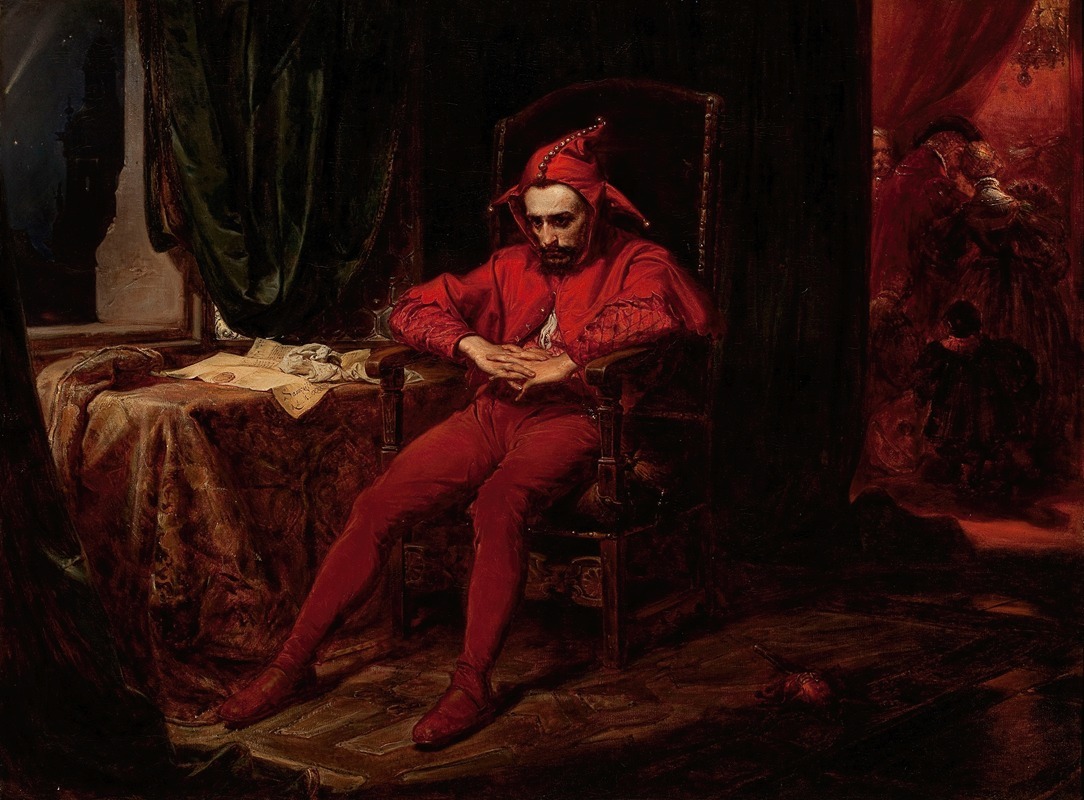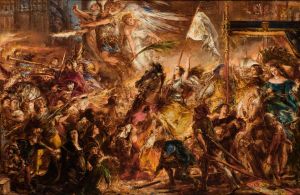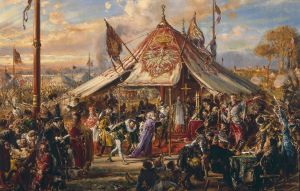
Stańczyk
A hand-painted replica of Jan Matejko’s masterpiece Stańczyk, meticulously crafted by professional artists to capture the true essence of the original. Each piece is created with museum-quality canvas and rare mineral pigments, carefully painted by experienced artists with delicate brushstrokes and rich, layered colors to perfectly recreate the texture of the original artwork. Unlike machine-printed reproductions, this hand-painted version brings the painting to life, infused with the artist’s emotions and skill in every stroke. Whether for personal collection or home decoration, it instantly elevates the artistic atmosphere of any space.
Stańczyk is a renowned oil painting created in 1862 by the Polish artist Jan Matejko, one of the most prominent painters of 19th-century Poland. The artwork is widely regarded as one of Matejko's masterpieces and a significant piece in Polish art history. It is currently housed in the Warsaw National Museum in Poland.
The painting depicts Stańczyk, a historical figure who served as a court jester during the reign of three Polish kings: Alexander Jagiellon, Sigismund I the Old, and Sigismund II Augustus in the 16th century. Stańczyk is remembered not only for his humor but also for his sharp wit and political insight, often using his role as a jester to comment on the political and social issues of his time.
In the painting, Stańczyk is shown sitting alone in a dimly lit room, dressed in his traditional jester's attire of red and white. His expression is somber and contemplative, a stark contrast to the lively atmosphere suggested in the background, where a ball or celebration is taking place in another room. The juxtaposition highlights the jester's isolation and introspection, suggesting a deeper awareness of the challenges facing Poland during his era.
A key element of the painting is the letter lying on the table in front of Stańczyk. The letter references the loss of Smolensk, a significant Polish-Lithuanian territory, to the Grand Duchy of Moscow in 1514. This historical event marked a critical moment in Polish history, symbolizing the decline of the Polish-Lithuanian Commonwealth's power. Stańczyk's melancholic demeanor reflects Matejko's interpretation of the jester as a figure who understands the gravity of the situation, even as others remain oblivious.
Jan Matejko's Stańczyk is often seen as an allegory for Poland's political struggles and a commentary on the nation's history. The painting resonates with themes of patriotism, loss, and the burden of foresight. Matejko, known for his historical paintings, frequently used his art to explore and critique Poland's past, and Stańczyk is no exception.
The work is celebrated for its emotional depth, historical significance, and masterful execution. It remains one of the most iconic representations of Stańczyk and a powerful symbol of Polish cultural and historical identity.


















